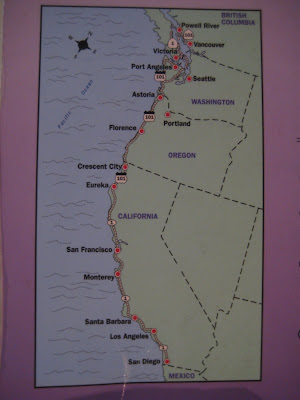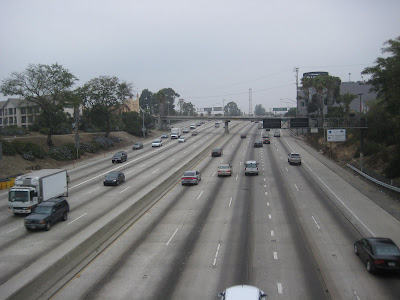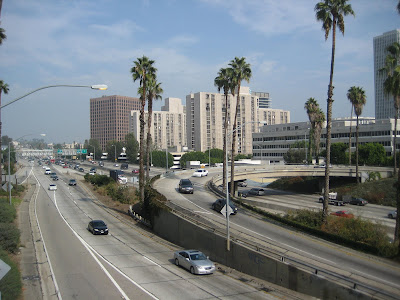Boxing the bike at the airport in San Diego

Assembling the bike in Frankfurt. Thanks to the cool bike shop in Vancouver, I knew how to do it properly this time.

I like statistics. Not the serious statistics with standard deviation, error bars and so on, just the simple summary of data and facts, some average numbers. So here are some facts about my tour:
Total days from starting in Vancouver to reaching San Diego: 67
- 9 days British Columbia (Canada)
- 6 days Washington
- 11 days Oregon
- 41 days California
- Riding days: 48
- Non-riding days (relaxing, driving in cities, hiking, etc.): 19
- Total distance: 3660 km (2274 miles)
- All counted kilometers (including driving around in cities on resting days, etc.): 4035 km (2507 miles)
- Longest riding day: 134 km (83 miles)
- Shortest riding day: 24 km (15 miles)
- Average distance on riding days: 76 km (47 miles)
Types of accommodation:
- 38 days (57 %) Camping at campsites
- 19 days (28 %) Private places (couchsurfing, warm showers, coincidences, etc.)
- 10 days (15 %) Hostels
Best days:
- Cycling with Ross, Chris and Christine
- Santa Cruz
Worst day:
- The first one (it was raining. But this was one of the very few real raining days. And nobody besides me was on the hiker/biker site at the campground)
Worst and best day at the same time:
- The scenic detour to the lost coast
Some random things I’ve seen or experienced
- Coolest plant: Redwood trees
- Coolest animal: Banana slug (see this picture in Chris' album)
- Most annoying animal: Raccoons (Waschbaeren). They stole my candy.
- Most scary moment: I heard an animal emptying a box of butter outside the tent in the middle of the night and thought it was a bear and realized that I had forgotten some yummy fruit in a bag inside my tent right next to me... But the 'bear' was only a raccoon, and it didn’t come inside for the fruit after finishing the butter.
- Favourite expression: „Howdy“. It is derived from „How do you do?“ and you’re not supposed to give an answer. So it actually means „Hi“, „Hello“ or „Ei guuude, wie?“ Most frequently used by passing racing cyclists.
- Favourite food: A lot. The longer the name, the better, like for example "Chocolate chip peanut butter cookie dough ice cream“
- Another food fact: There is hardly anything that doesn’t contain either peanuts or beans (this is an exaggeration).
- I learned: The star constellation „der Grosse Wagen“ (which means „the big cart or trolley“) is called „the Big Dipper“ in american english, which means „die Grosse Suppenkelle“.
- People are very helpful. A group of four racing cyclists pushed me for some kilometers at the end of a long day (I didn’t ask them to do that!), which was really nice.
- Things I missed: a WiFi capable device. But on the other hand, it was more communicative not to have one. And front panniers (I had accumulated a lot of stuff towards the end)
- A nice coincidence: I randomly met Hardy and Alena from Berlin three times: First time in Canada, two weeks later in Washington, another two weeks later in northern California. Same direction, different routes, however, sometimes by chance the same spot at the same time.
- Coolest cities (not in order): San Francisco, San Diego, Santa Cruz, Monterey, Vancouver, Santa Barbara, ... Well, everything except Los Angeles.
A rough map of the route (from The Book "Bicycling the Pacific Coast"

































































